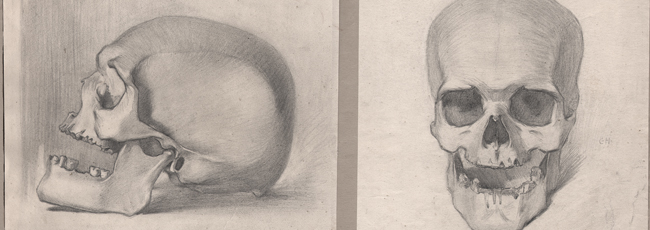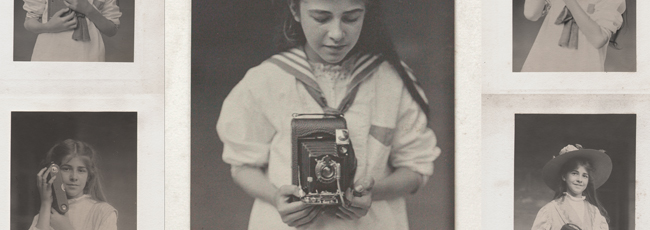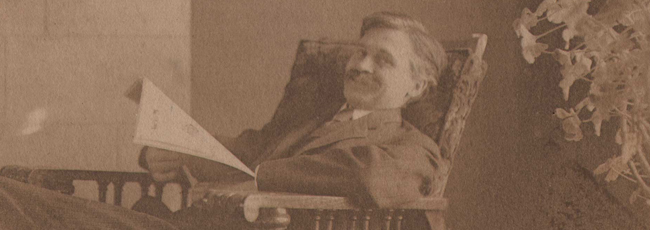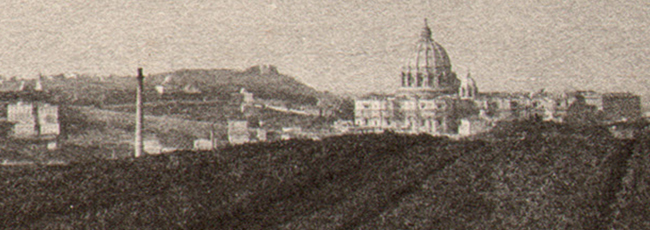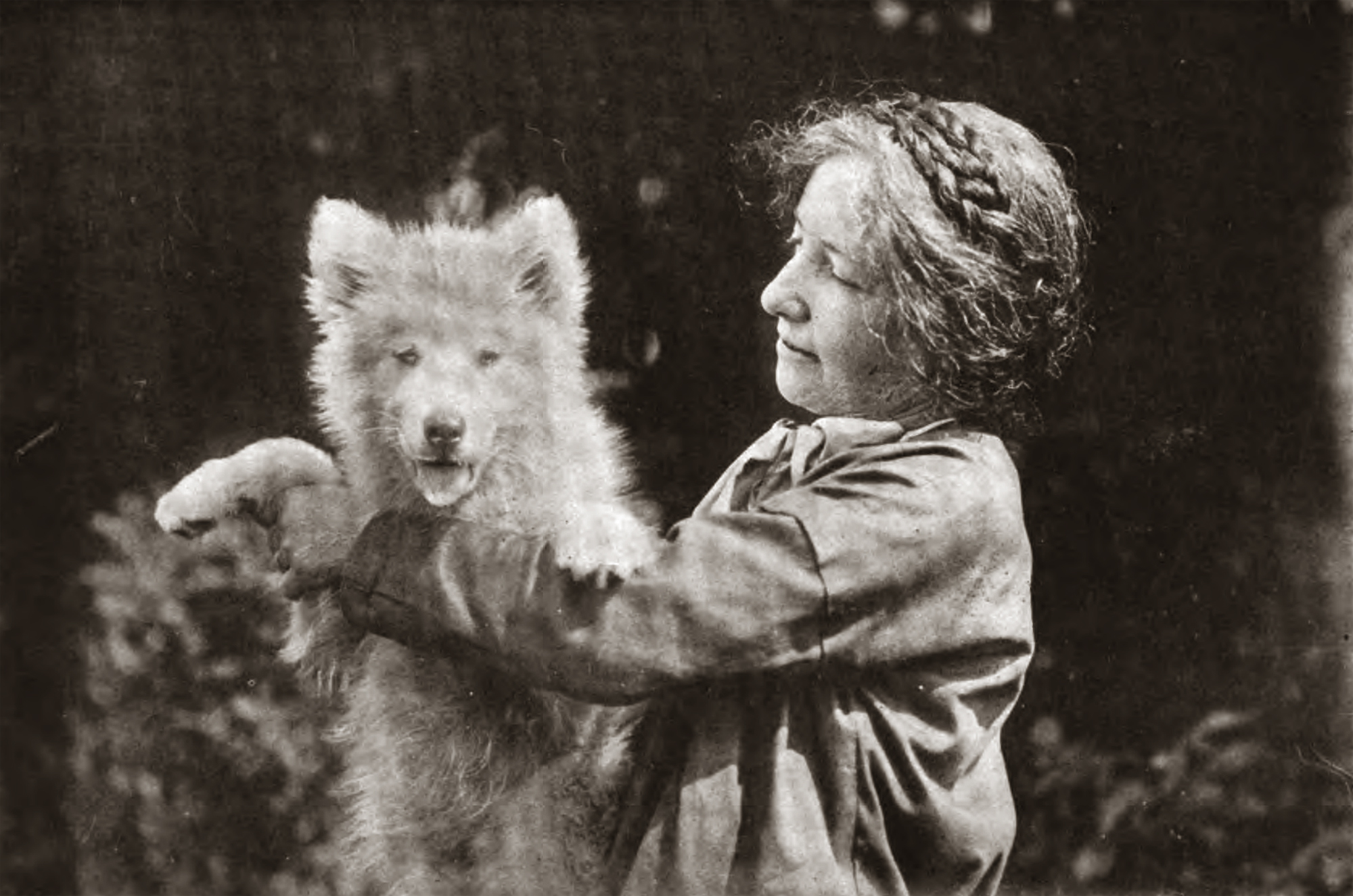
Photographer Louise Birt Baynes (1876-1958) and her “best friend”- Polaris- the subject of a book written and first published in 1922 by her husband Ernest Harold Baynes: “Polaris- The Story of an Eskimo Dog”
With this highlight, I hope to bring renewed attention to Louise Birt Baynes, an important woman photographer of the early 20th century whose work has gone unrecognized until now. With unattributed select examples of her flower studies purchased for the PhotoSeed archive in 2011, it was in April of 2012 they could definitively be identified through proper attribution in a 1904 issue of the journal Photo Era. Baynes, (1876-1958) was born in Halifax, Nova Scotia and eventually immigrated to America, becoming an art student in the Boston area and later marrying in 1901. After 1904 a lifelong resident of Meriden, New Hampshire, she continued as an amateur photographer, naturalist and author during a fruitful 25-year collaborative marriage with her life partner, the naturalist Ernest Harold Baynes.
— David Spencer See work by Louise Birt Baynes in the Archive
The former Louise Birt O’Connell, an art student from the Boston area (1.) married the important naturalist and author Ernest Harold Baynes (1868-1925) in 1901, becoming Louise Birt Baynes. Born in Calcutta India, Harold Baynes was 11 when he first came to America from England. Also an amateur photographer, his father was an inventor “who made substantial contributions to the science of photography.” (2.) Settling in Meriden, New Hampshire around 1904, one of his many accomplishments related to conservation efforts in the United States was his founding of the American Bison Society with the purpose of saving the buffalo from extinction. As for his wife, known as Birt, (3.) Louise Baynes first efforts at amateur photography were believed to be wildlife and or plant studies. Around the time of her marriage, she had “furnished the illustrations” of wildlife subjects for an unknown article written by her husband that was subsequently published. (4.) The flower studies in this online site are early examples of her work, with Golden-Rod published in the pages of the Photo Era in early 1904. Taken in their natural surroundings and not the studio, some of these photographs were done using artificial light sources-so called “flashlight pictures”- most likely photographed using magnesium ribbon as an illumination source. Author and photographer Frank Roy Fraprie, in his article titled Photographing the Wild Flowers for the previously mentioned journal, commented on Golden-Rod as well as a reflection study of skunk cabbage done by Baynes reproduced in the pages of the March issue:
Mrs. Baynes has conquered all these difficulties, and her picture, “Harbingers of Spring,” is interesting to both the naturalist and the artistic photographer,— to one for its fidelity and to the other for its good composition. …
Mrs. Baynes brings back to our memory the fragrance of New England fields, the anise odor of the omnipresent yarrow, lover of roadsides and pastures, and the resinous fragrance of the goldenrod, a magnificent specimen, half-emerging in lonesome majesty from the depths of the elder thicket. (5.)
In 1906, Louise Birt Baynes is listed as being a leading American woman photographer, along with 31 other women, including Jessie Tarbox Beals, Francis Benjamin Johnston, Annie Brigman and others who contributed over 200 photographs for an exhibition hosted by The Camera Club of Hartford. (6.) The same year, she had five photographs, some of animal subjects, shown in the class: Scientific and Technical Photography and its Application to Processes of Reproduction at the Fifty-first Annual Exhibition of the Royal Photographic Society of Great Britain. (7.)
The eight flower studies done by Louise Birt Baynes on this site are all loosely mounted or tipped to or within period supports. With the exception of one, they are further identified in ink as (h-(Harold)) L.B. on the support verso in Bayne’s hand. In addition to the title of the work appearing on the upper margin of the support rectos, lines of poetry, some original and from other sources further embellish the recto supports below the images. As to provenance, several of the photographs were previously owned by one Nellie B. Sawyer, believed to be a family member of the photographer. Attribution on one support verso states: Nellie B. Sawyer and another: One of Mrs. Bayne’s photographs-To Mother from Nellie.
Notes:
1. BIOGRAPHICAL TRANSCRIPT: ERNEST HAROLD BAYNES: ONLINE PDF DOCUMENT GATHERED FROM MULTIPLE SOURCES, (1993?) STARTING WITH CROYDON (N.H.) HISTORIAN DANA S. GROSS, ET AL: ACCESSED: 2012
2. IBID: PLEASE ALSO SEE ONLINE: NEW ENGLAND NATURALISTS: A BIO-BIBLIOGRAPHY BY FRED BURCHSTED, WHO LISTS IN HIS BIOGRAPHY ON BAYNES THAT HE WAS AN: ASSISTANT TO HIS FATHER, JOHN BAYNES, INVENTOR OF PHOTOGRAPHIC MODELING, 1893-1900. FROM JOHN BAYNES (1842-1903) SEPTEMBER 30TH OBITUARY NOTICE IN THE NEW YORK TIMES, IT IS SAID: “HIS FIRST GREAT INVENTION BEING THAT OF THE CELLULOID PHOTOGRAPHIC FILMS” WAS ACCOMPLISHED SHORTLY AFTER HIS ARRIVAL TO AMERICA FROM ENGLAND IN 1875. HE FOLLOWED THIS IN 1885 WITH THE INVENTION OF THE GOLD ETCHING PHOTO PROCESS AND THEN PHOTOGRAPHIC MODELING, AND PHOTOGRAPHICALLY MODELED RECORDS OF SOUND VIBRATIONS AMONG OTHER INVENTIONS.
3. IBID: ERNEST HAROLD BAYNES TRANSCRIPT
4. IBID
5. PHOTO-ERA-THE AMERICAN JOURNAL OF PHOTOGRAPHY: MARCH, 1904: PP. 37-38. “HARBINGERS OF SPRING”, A STUDY OF SKUNK CABBAGE, APPEARS ALONG WITH SEPARATE HALFTONE PLATES OF “YARROW” AND “GOLDENROD” IN THE ISSUE.
6. WITH THE CAMERA CLUBS: FROM: THE AMERICAN AMATEUR PHOTOGRAPHER: NEW YORK: MAY, 1906: P. 248
7. THE PHOTOGRAPHS EXHIBITED WERE: 324. “PRAIRIE WOLF”, 325. “AT CLOSE OF DAY” 326. “PRAIRIE WOLF”
327. “EVENING” 328. “THE PRICE OF LIFE”. INTERESTINGLY, BAYNES IS ALSO LISTED WITH THE LONDON (REGENT’S PARK) ADDRESS OF 12, HILL ROAD, ST. JOHN’S WOOD, N.W. IN THE ONLINE CATALOGUE OF THE EXHIBITORS.
